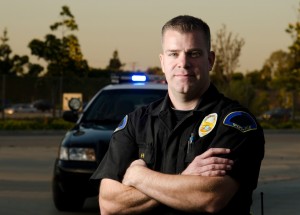More Police Body and Car Cameras Being Seen in Police Agencies Across the Country
 Tensions between police departments and the American public are at an all time high in the aftermath of the fatal shooting in Ferguson, MO. Conflicting accounts of the events that led up to the shooting that night pinned local police against Ferguson residents, leading to riots across town. Many argue that had there been a video recording device in the police car or on the officer, we would have a much clearer picture of what took place, and as a result, local police agencies across the country are equipping either police cars or officers with cameras.
Police body cameras and in car camera systems serve many purposes, including providing an unbiased source of evidence, improving police professionalism and safety and improving relations between law enforcement departments and the public. Over 70% of state and highway patrol cars are equipped with video recording systems, and local police agencies are quickly catching up. In light of the incident in Ferguson, many local agencies across the country are now either requiring their officers to carry police body cameras or installing in car cameras in patrol vehicles. Over 1,000 police agencies across the country have supplied officers with body cameras, most recently including officers in Ferguson, according to NBC News.
While body and car cameras can improve public trust in police, they also play an extremely important role for officers in the courtroom. Not only do they help convict suspects by catching their illegal actions on tape, but they have also exonerated many officers whose actions have been questioned during controversial cases. NBC News recently reported that in Salt Lake City, the district attorney found that an officer who had fatally shot an unarmed man was justified in his actions because of the revealing footage from the officer’s body camera. The video showed the man defying orders from the officer and lifting his shirt while pulling his hand from his waistband as he tried to flee the scene. The officer fired two shots at the suspect as a result, believing the man was about to pull a weapon.
The public isn’t able to see a situation from a police officer’s perspective, making it difficult to understand an officer’s choices in high intensity scenarios. Policemen are trained to protect both citizens and themselves, and if a suspect is exhibiting threatening behavior, they need to take the appropriate action to ensure everyone’s safety. Police body cameras and car cameras help show the public an officer’s side of the story.
Tensions between police departments and the American public are at an all time high in the aftermath of the fatal shooting in Ferguson, MO. Conflicting accounts of the events that led up to the shooting that night pinned local police against Ferguson residents, leading to riots across town. Many argue that had there been a video recording device in the police car or on the officer, we would have a much clearer picture of what took place, and as a result, local police agencies across the country are equipping either police cars or officers with cameras.
Police body cameras and in car camera systems serve many purposes, including providing an unbiased source of evidence, improving police professionalism and safety and improving relations between law enforcement departments and the public. Over 70% of state and highway patrol cars are equipped with video recording systems, and local police agencies are quickly catching up. In light of the incident in Ferguson, many local agencies across the country are now either requiring their officers to carry police body cameras or installing in car cameras in patrol vehicles. Over 1,000 police agencies across the country have supplied officers with body cameras, most recently including officers in Ferguson, according to NBC News.
While body and car cameras can improve public trust in police, they also play an extremely important role for officers in the courtroom. Not only do they help convict suspects by catching their illegal actions on tape, but they have also exonerated many officers whose actions have been questioned during controversial cases. NBC News recently reported that in Salt Lake City, the district attorney found that an officer who had fatally shot an unarmed man was justified in his actions because of the revealing footage from the officer’s body camera. The video showed the man defying orders from the officer and lifting his shirt while pulling his hand from his waistband as he tried to flee the scene. The officer fired two shots at the suspect as a result, believing the man was about to pull a weapon.
The public isn’t able to see a situation from a police officer’s perspective, making it difficult to understand an officer’s choices in high intensity scenarios. Policemen are trained to protect both citizens and themselves, and if a suspect is exhibiting threatening behavior, they need to take the appropriate action to ensure everyone’s safety. Police body cameras and car cameras help show the public an officer’s side of the story.
